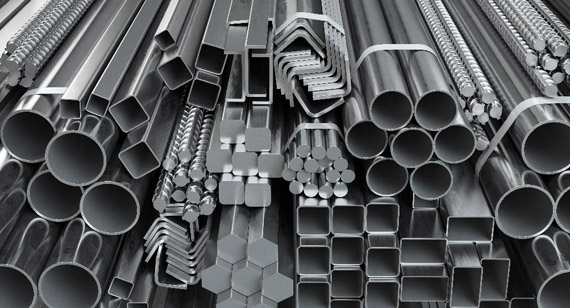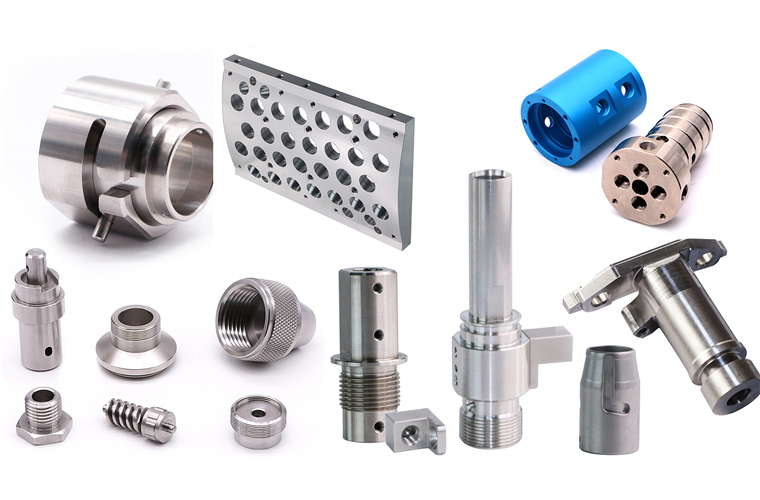15 years one-stop China custom CNC machining parts factory

Hey there I’m VMT Sam!
With 25 years of CNC machining experience we are committed to helping clients overcome 10000 complex part-processing challenges all to contribute to a better life through intelligent manufacturing. Contact us now
 118 |
Published by VMT at Jun 30 2024
118 |
Published by VMT at Jun 30 2024
Introduction
Stainless steel is a widely used alloy material in many industries due to its unique corrosion resistance and mechanical properties. This article explores various aspects of stainless steel, including its definition, composition, properties, grades, types, temperature effects, weldability, applications, and how to choose the right stainless steel for your project needs.
What is stainless steel?
Stainless steel is an iron-based alloy that contains at least 10.5% chromium. This addition of chromium forms a thin layer of chromium oxide on the surface, which effectively prevents further oxidation and corrosion, thus providing excellent corrosion resistance.

What is the composition of stainless steel?
The main components of stainless steel include iron, chromium, nickel, and small amounts of carbon, silicon, and manganese. Chromium is the key element for corrosion resistance, while nickel enhances toughness and strength. The proportion of these elements varies among different stainless steel grades to meet specific application needs.
Is stainless steel 100% stainless?
Stainless steel is not 100% stainless. While it offers superior corrosion resistance compared to regular steel, it can still corrode under extreme conditions such as exposure to high concentrations of acids, bases, or saline solutions. Additionally, stainless steel can be affected by mechanical damage or stress corrosion cracking.
What percentage of stainless steel is steel?
The iron content in stainless steel, which constitutes the main component of steel, is typically over 50%. The exact percentage depends on the type and grade of stainless steel, with various alloying elements added in specific proportions to achieve desired properties.
What are the characteristics of stainless steel?
Stainless steel has several key characteristics:
What are the grades of stainless steel?
Common grades of stainless steel include 304, 316, 410, and 430. Each grade has specific chemical compositions and mechanical properties. For example, 304 stainless steel is a general-purpose grade with good corrosion resistance and machinability, while 316 stainless steel includes molybdenum for enhanced corrosion resistance in harsh environments such as seawater.
How to identify stainless steel grades?
Methods for identifying stainless steel grades include:
What are the five types of stainless steel?
Stainless steel can be classified based on its structure and application:
How does temperature affect stainless steel?
Temperature significantly impacts stainless steel performance. High temperatures can reduce strength and toughness and cause phase changes and corrosion. When selecting and using stainless steel, the temperature conditions of the application environment must be considered. Generally, stainless steel maintains good performance at high temperatures but should not exceed its critical temperature.
Which stainless steel is the strongest?
There is no single stainless steel that is the strongest in all cases. Different grades excel in strength, toughness, and hardness. For instance, martensitic stainless steel offers high hardness and wear resistance for high-load applications, while austenitic stainless steel provides better toughness and corrosion resistance for impact and corrosive environments. The choice depends on the specific application requirements.
Which types of stainless steel can be welded?
Most stainless steel types can be welded, but the welding method and parameters must be adjusted according to the type and grade. Common welding methods include manual arc welding, TIG welding, and MIG/MAG welding. Controlling welding temperature, speed, and atmosphere is crucial for ensuring the quality and performance of the weld joint.
What are the applications of stainless steel in heavy industry?
Stainless steel's excellent corrosion resistance and mechanical properties make it widely used in heavy industry. In petrochemical fields, it is used for corrosion-resistant pipelines, storage tanks, and reactors. In shipbuilding, it is used for hulls, equipment, and offshore facilities. In energy equipment, it is used for nuclear power plants and thermal power plants. In mining machinery, it is used for various mining equipment and tools.
What industries use stainless steel?
Stainless steel is used across many industries, including construction, decoration, kitchenware, medical, automotive, and aerospace. In construction, it is used for doors, windows, curtain walls, and railings. In decoration, it is used for various art and decorative pieces. In kitchenware, it is popular due to its corrosion resistance and hygiene. In medical, it is used for surgical instruments, medical devices, and artificial joints. In automotive and aerospace, it is used for engine components, body structures, and aircraft parts.

How to choose the right stainless steel for your project?
Choosing the right stainless steel involves considering factors such as the environment, corrosion requirements, mechanical properties, and cost. First, understand the project's environment and conditions to determine corrosion resistance and mechanical property requirements. Then, select the appropriate stainless steel grade and type based on specific needs. For high-load and wear-resistant applications, choose martensitic stainless steel; for impact and corrosion resistance, choose austenitic stainless steel. Cost factors should also be considered to select the most cost-effective stainless steel material. Finally, consult a professional stainless steel supplier or engineer for specific advice and guidance.
| Model | Features | Price | Application |
| 304 | It has good corrosion resistance, heat resistance, low temperature strength and mechanical properties. It has good processing performance at room temperature such as deep drawing and bending, and will not harden after heat treatment. | $$ | Widely used in food equipment, general chemical equipment, atomic energy industrial equipment, household 1, 2 kinds of western tableware, indoor piping, water heaters, bathtubs, boilers, auto parts, medical equipment, building materials, etc. |
| 316 | It has better corrosion resistance than 304 stainless steel, especially in seawater and other chloride-containing media. Molybdenum is added to improve the ability to resist pitting and crevice corrosion. | $$$ | Applicable to seawater applications, chemical, papermaking, medical, food processing and other industries, commonly used in the manufacture of pumps, valves, pipes, heat exchangers, etc. |
| 201 | 201 stainless steel is a nickel-saving steel type. It is magnetic after cold working. Its corrosion resistance is slightly worse than 304 and 316, but its cost is lower. | $ | Mainly used for some decorative and structural parts that do not require high corrosion resistance. |
| 430 | It is a ferritic stainless steel with good corrosion resistance and oxidation resistance, but the work hardening rate is low and it is not suitable for bearing large stresses. | $ | Commonly used in the manufacture of heat-resistant tableware, household appliances, kitchen utensils, etc. |
| 409L | It is a martensitic stainless steel with good corrosion resistance and processing performance, but its corrosion resistance is not as good as 304 and 316. | $ | Commonly used in the manufacture of automobile exhaust pipes, heat exchangers, etc. |
Conclusion
Stainless steel is a vital engineering material in modern industry due to its unique properties. By understanding stainless steel's various aspects, we can better select and use it to meet complex and demanding industrial needs. In CNC machining parts manufacturing, stainless steel CNC machining parts are favored for their excellent performance. Whether for custom CNC machining or CNC prototyping, choosing the right stainless steel is key to ensuring product quality and performance. Therefore, professionalism and rigor are essential in selecting and applying stainless steel to ensure successful project implementation.
Ready To Start Your Next Project?
Get Instant Quote

Request a Free Quote
Send us a message if you have any questions or request a quote. We will get back to you ASAP!